The week at a glance
- Spanish Sparrow and Dark-eyed Junco still in Hampshire
- Ross's Gull in County Down
- Lesser White-fronted Goose and Western Sandpiper still in Norfolk
- Northern Long-tailed Tits in West Yorkshire
- Huge numbers of Iceland Gulls beginning to filter south
In many areas, the third week of January turned out to be the coldest of the winter so far, with night-time temperatures dropping well below zero across much of Britain and Ireland. On the plus side, some glorious winter weather was enjoyed by those able to make the most of it, with big blue skies and light winds lifting spirits after what has been a very stormy period. Bird-wise, it was very much a case of 'as you were': all the long-stayers were present and correct, although sharp overnight frosts and subsequent frozen waterbodies ensured that there was a bit of a shake-up on the wildfowl front, and the aftermath of last week's storms finally produced a hotly anticipated Arctic gull.
Entirely predictable was the continued presence of the Hampshire's very own conquistador: the male Spanish Sparrow was around gardens in Calshot (Hants). Evidence to suggest it has left its legacy amongst the local House Sparrow population is still far from concrete; there were no reports of putative hybrids this week, despite a steady flow of admirers.
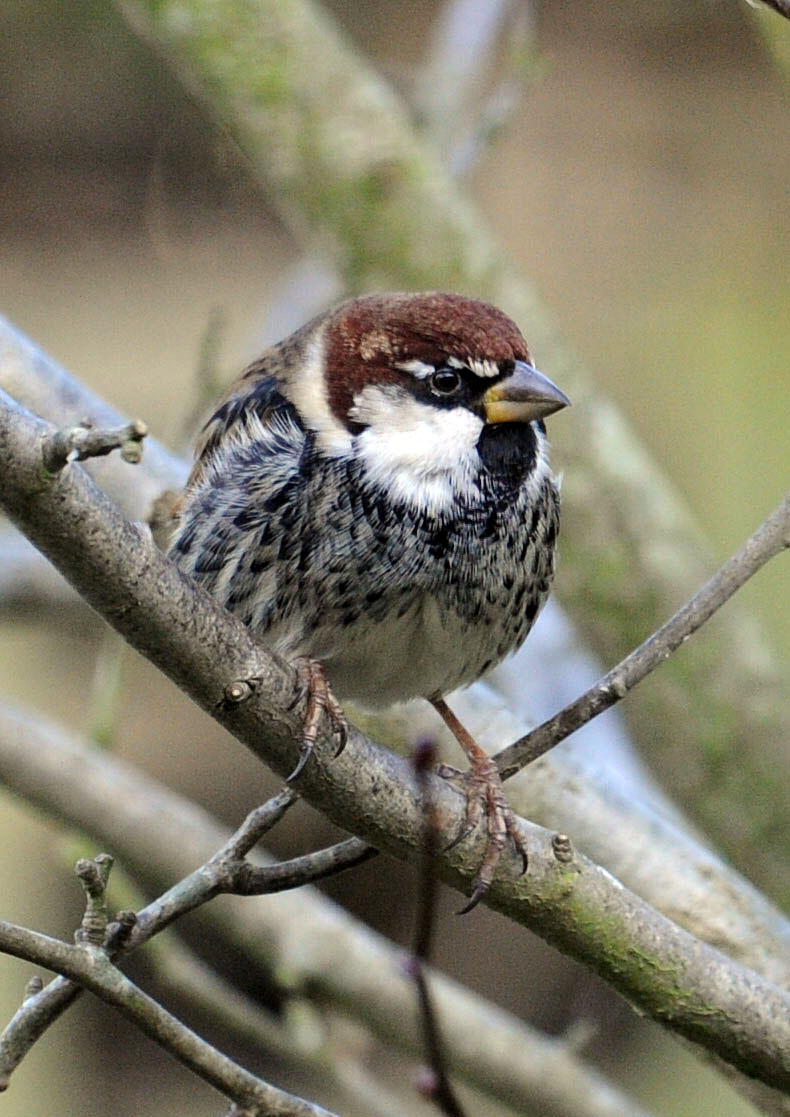
Spanish Sparrow, Calshot, Hampshire (Photo: Tony Hovell)
Also still in Hampshire was the Dark-eyed Junco, still entertaining sparrow-twitchers nearby at Hawkhill Inclosure as it performed wonderfully around the fallen conifers just northwest of the car park throughout the week.
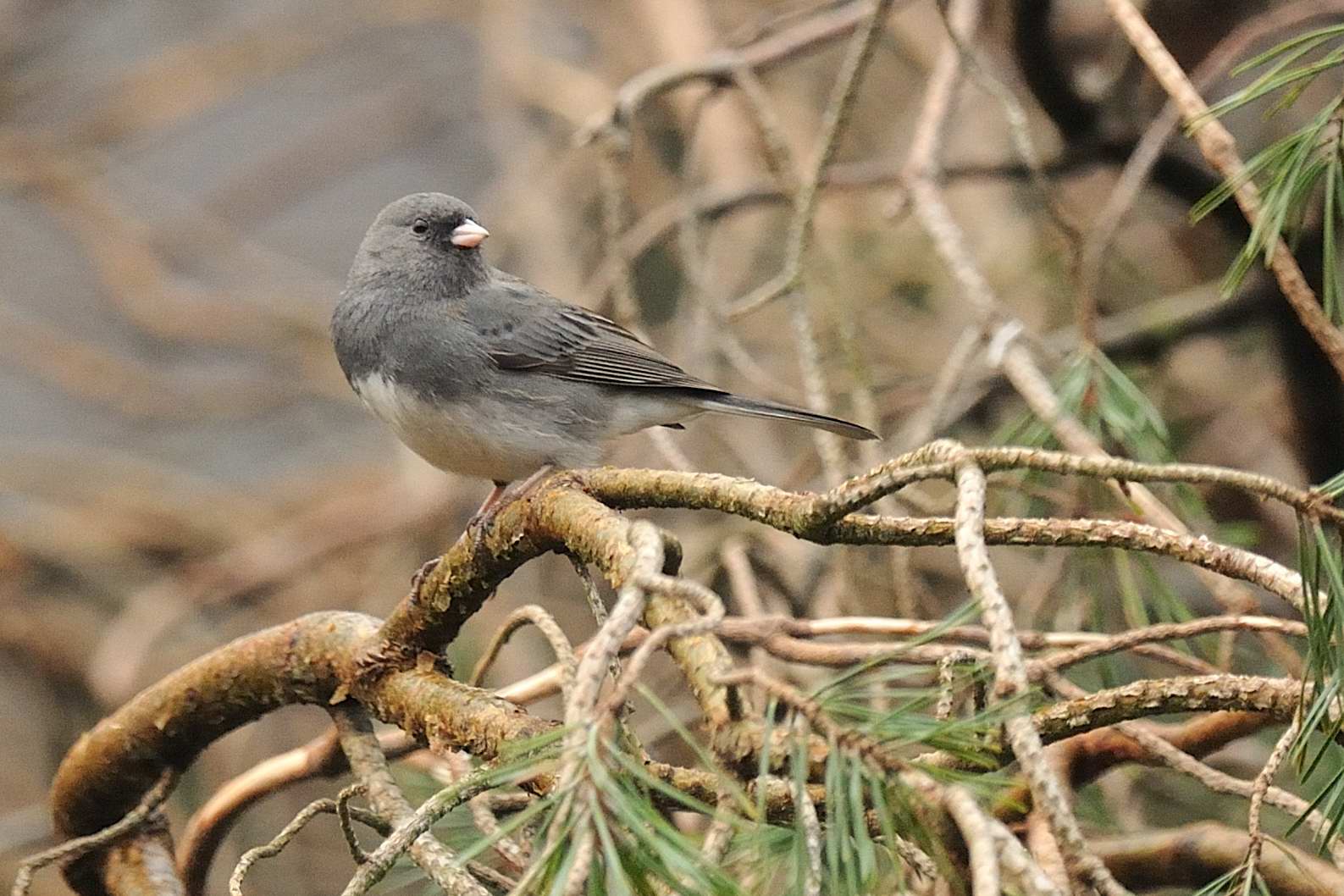
Dark-eyed Junco, Hawkhill Inclosure, Hampshire (Photo: Brian Harrison)
County Down left it late to claim one of the birds of the week, an adult Ross's Gull found in Ardglass harbour during the afternoon of 18th. Being the first Northern Irish record for fourteen years, it will no doubt prove popular if it lingers into next week.
In Norfolk, the Lesser White-fronted Goose continued at Buckenham Marshes to 18th, while the first-winter Western Sandpiper was also still favouring Arnold's Marsh at Cley.

Western Sandpiper, Cley Marshes NWT, Norfolk (Photo: Chris Upson)
After its brief sojourn to Drift Reservoir earlier in the month, Cornwall's Bufflehead appears to have settled down once more: it was still at Helston Loe Pool to 17th. Up in Highland, the first-winter Greater Yellowlegs was still at Loch Fleet on 13th.
Vagrant white-cheeked geese this week included a Richardson's Canada Goose and two intermediate birds (perhaps Lesser Canada Geese) still on Tiree (Argyll) to 16th and up to three Richardson's in the Ballyconnell/Lissadell (Sligo) area on the same date. The Richardson's was also still with local Canadas at Torr Reservoir (Somerset) on 14th, although there was no sign of last week's large, dark bird on The Mullet (Mayo). Two Red-breasted Geese remained in residence: the Essex bird was at Tollesbury Wick on 16th then Old Hall Marshes again the following day, while the Exe Estuary (Devon) bird was still present to 14th. Eight Black Brants included two still in Ireland at Wexford Wildfowl Reserve on 15th, with British birds still at Gibraltar Point (Lincs) on 12th, Hollesley (Suffolk) on 13th–15th, Hayling Island (Hants) to 15th, Fishbourne Creek then West Wittering (W Sussex) to 15th, again at Trimley Marshes (Suffolk) on 15th, and Wells-next-the-Sea (Norfolk) on 13th–17th.

Black Brant, Hollesley, Suffolk (Photo: Chris Mayne)
The colour ratio of the four 'good' Snow Geese this week was split 50:50. White morphs were at Carnwath (Clyde) on 15th and again at Big Isle (Donegal) the same day, while blue morphs were still at Lower Lough MacNean on 14th–15th and again on Tiree on 16th. In addition, at least three of suspect origin were still knocking around the Leighton Moss (Lancs) area throughout. Equally distasteful were the two Ross's Geese still roaming the North Norfolk coast between Burnham Overy and Blakeney, confusingly switching allegiance from feral Barnacles to wild Pink-feet and back again.
A drake American Wigeon at Coombe Hill Meadows (Glos) was new on 12th–16th, with another reported at Loch of Strathbeg (Aberdeenshire) on 16th. In addition, the long-staying drake at Loch Bee, South Uist (Outer Hebrides) was joined by a second bird on 18th. Three other long-stayers remained in residence at Angler's Country Park (W Yorks), Kirk Loch (Dumf & Gall) and Dawlish Warren (Devon) throughout the week. A much quieter period for Green-winged Teal saw just six birds recorded: new drakes were on Holy Island (Northumberland) on 15th–18th and White's Marsh (Cork) on 18th. One was again at Siddick Ponds (Cumbria) on 14th in addition to regulars still at Eyebrook Reservoir (Leics), Leighton Moss (Lancs) and Caerlaverock (Dumf & Gall). A female-type Blue-winged Teal was an unseasonable find at Loch Stiapavat, Lewis (Outer Hebrides) on 13th, while others remained at Longham Lakes (Dorset) to 14th and St Mary's (Scilly) to 18th.
A drake Lesser Scaup at Lough Sheelin (Cavan) on 8th was new, as was a probable at Dozmary Pool (Cornwall) on 15th–17th — if it is one, it is presumably a returning bird. The female was again at Loch of Skene (Aberdeenshire) on 14th–15th in addition to stalwarts still in Cardiff Bay (Glamorgan) on 13th, Marden Quarry (Northumberland) on 15th, Lough Gill (Kerry) to 17th, and Slimbridge WWT (Glos) to 18th. Two new Ring-necked Ducks were found in Ireland: a drake at The Lough, Cork City on 13th and a female alongside the Lesser Scaup at Lough Gill (Kerry) on 15th. Lincolnshire's elusive drake reappeared at Kirkby-on-Bain Pits on 15th–17th, and the Dorset duo was still at Chard Junction to 18th. Other drakes were still at Lough Shivnagh (Donegal) on 12th and Par Beach Pool (Cornwall) to 18th; Norfolk's female commuted from Ranworth to Wroxham Broad on 17th and another moved between Potteric Carr and Lakeside, Doncaster (S Yorks) on 14th–16th.

Ring-necked Duck, Kirkby on Bain GPs, Lincolnshire (Photo: Russell Hayes)

Ring-necked Duck, Lakeside, Doncaster, South Yorkshire (Photo: Justin Carr)
Probably associated with the colder weather, there was a good shuffle in Ferruginous Duck records. A female was found at Thamesmead (London) on 15th but had gone the next day, mirroring a similar London record from last winter. The fortunes of two new drakes differed considerably: one at Woolhampton Gravel Pits (Berks) on 14th–15th was very much alive, although the same could not be said for one unfortunately shot by wildfowlers at Mullaghmore Lough (Monaghan) on 14th. Elsewhere, the female was again reported at Ranworth Broad (Norfolk) on 13th, and the drake was still at Blashford Lake (Hants) to 14th.
A healthy crop of Surf Scoter records included up to three drakes off Llanddulas (Conwy) on 14th–16th, another drake again off Ruddon's Point (Fife) on 13th, and new females off Black Rock Sands (Gwynedd) on 14th and Fermoyle (Kerry) on 17th. In addition, birds were still off Penzance (Cornwall) on 14th and Dawlish Warren (Devon) throughout. A lone White-billed Diver record involved an adult off Cara, South Ronaldsay (Orkney) on 15th.
It was a much quieter week for Great White Egrets, with all but two of the fifteen reports coming from England. These included new birds at Fritton Marshes (Norfolk) on 15th and Cop Mere (Staffs) on 16th, while two Welsh birds were still at National Wetlands Centre (Carmarthenshire) and Llangorse Lake (Powys). The Cattle Egret was again in the Hempholme/Tophill Low (E Yorks) area on 13th–18th and, with access arranged, could be enjoyed by a wider audience this week. The Warlington (Hants) bird was also present throughout, while twos on Jersey at Grouville Marsh and Fauvic may or may not have related to the same pair. A White Stork at Cluny (Fife) on 15th is presumably the escapee seen around Glenrothes towards the end of 2011.
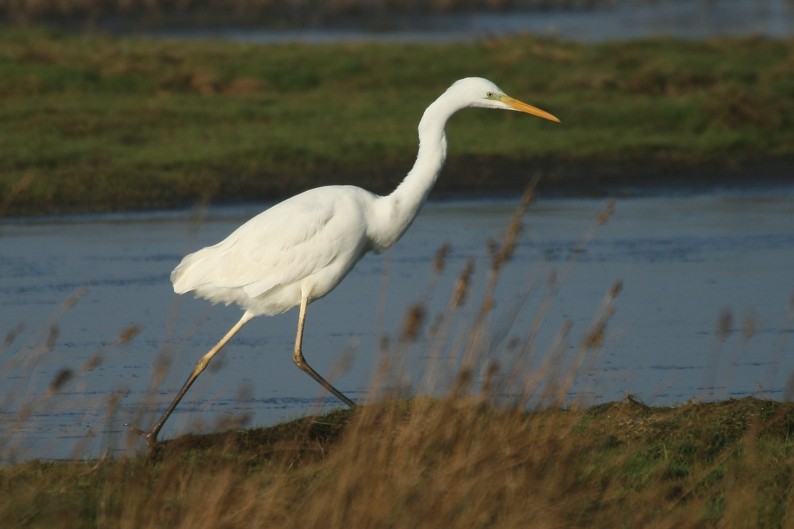
Great White Egret, Campfield Marsh RSPB, Cumbria (Photo: Sam Northwood)
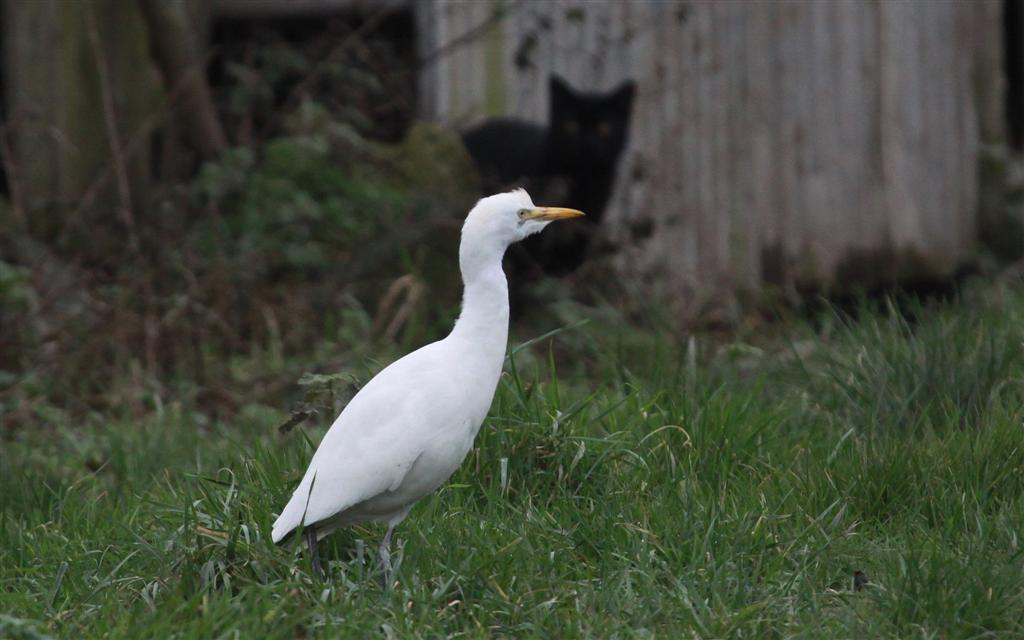
Cattle Egret, Tophill Low NR, East Yorkshire (Photo: Richard Brown)
For reasons unknown, the week witnessed yet another significant influx of Glossy Ibises. In addition to long-stayers still at Exminster Marshes (Devon), Sandbach Flashes (Cheshire), Leighton Moss (Lancs) and two at Stodmarsh (Kent), around twenty new birds typically showed a southwesterly bias to their arrival. Irish flocks of five and three were at Dungarvan (Waterford) and Termoncarragh Lough (Mayo) respectively, with two at Ringarogy Island (Cork) on 17th, and singletons at Skibbereen (Cork) on 12th and South Slob (Wexford) on 15th. In Wales, two flew over Neyland (Pembrokeshire) on 12th, with those or another pair also in the county at St David's on 13th, three at Marloes on 18th, and a single at Sageston on 14th. One was at Newport Wetlands (Gwent) on 14th–15th then spent a couple of days commuting between Barry and Cosmeston Lakes on 16th–17th, before moving back to its original site on 18th. Two were also at Crediton (Devon) on 17th with a single at Thurlestone all week, and another at Chapel Amble (Cornwall) from 12th. Finally, the long-staying Essex bird at Fingringhoe Wick was briefly joined by a second bird on 17th.

Glossy Ibis, Chapel Amble, Cornwall (Photo: Brian Mellow)
It is almost a surprise that no further wintering Pallid Harriers have been unearthed yet this winter, with the sole record concerning the juvenile still roosting at Lough Corrib (Galway) on 15th. However, the orangey juvenile in Cambridgeshire, previously advertised as a potential Northern Harrier, is now thought likely to be a hybrid Hen × Pallid. The Emerald Isle also laid claim to the week's only other significant bird of prey: a young Gyr Falcon hunting around Blennerville (Kerry) on 15th.
Just under twenty Rough-legged Buzzards showed a typical east-coast bias, with the significant exception being one still at Kilcoole (Wicklow) throughout the week. Six in Norfolk included two still in the Holkham and Wells-next-the-Sea area, and a minimum of four were in Kent. Inland birds were on the Derwent Moors (S Yorks/Derbys), near Woodborough (Notts) and around Ouse Fen (Cambs).
Up in Ayrshire, the wintering Pectoral Sandpiper was still allowing close approach at Dundonald Camp to 16th, but there were no reports of the Temminck's Stint in Cambridgeshire. The Lesser Yellowlegs was still on the Brue Estuary at Burnham-on-Sea (Somerset) to 16th, while wintering Spotted Sandpipers remained in residence on the Plym Estuary (Devon) to 15th, Chew Valley Lake (Somerset) to 17th and at Lyme Regis (Dorset) throughout.
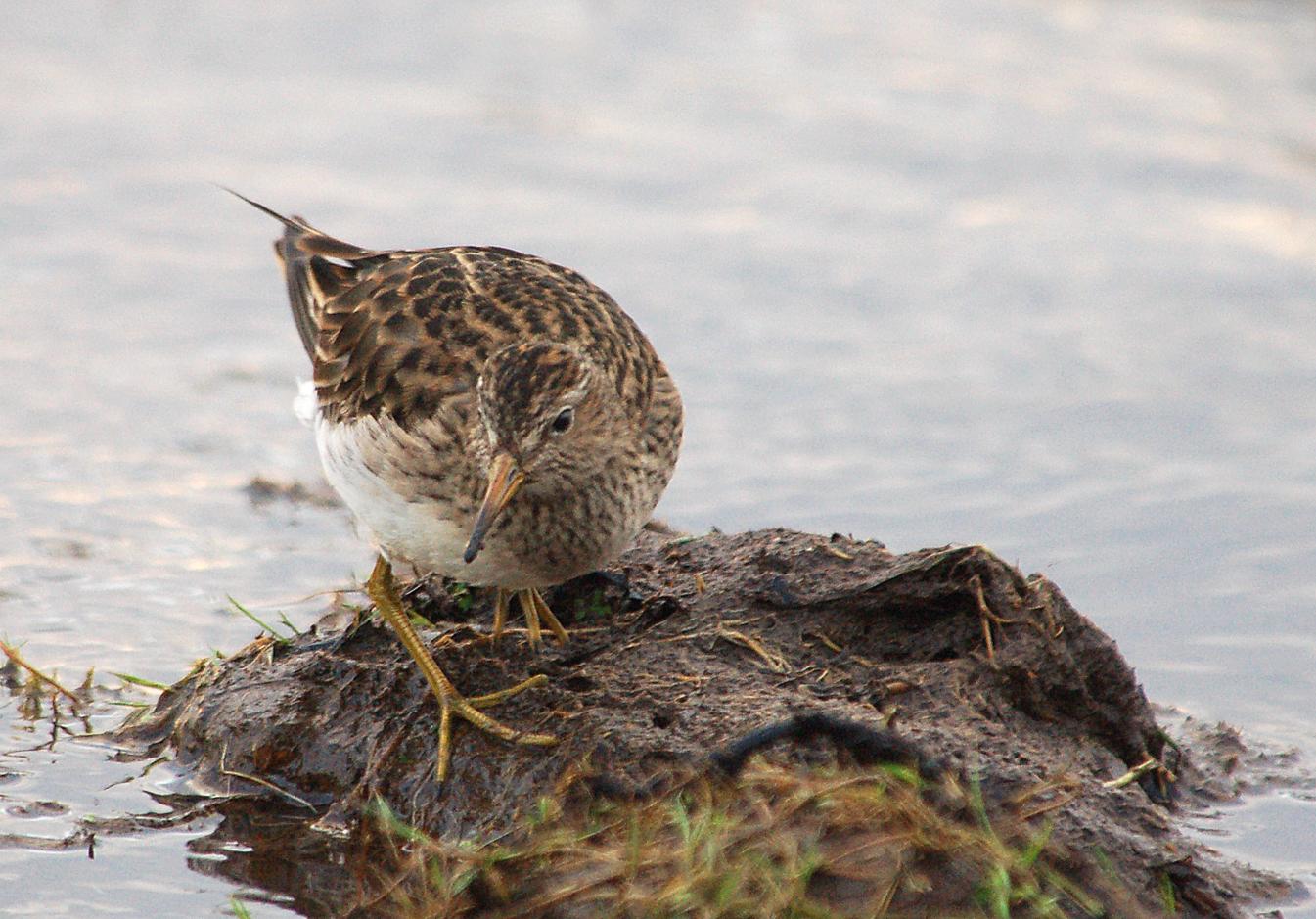
Pectoral Sandpiper, Dundonald Camp, Ayrshire (Photo: Mark Hope)

Spotted Sandpiper, Chew Valley Lake, Somerset & Bristol (Photo: Ian White)
The Dingle (Kerry) peninsula seems to be enjoying a healthy run of good birds at the moment, and a first-winter Long-billed Dowitcher found at Fahamore on 13th continued the party. It later transpired that the bird had been seen very briefly in poor weather back in November 2011, when behaviour (on a beach) and short-billed appearance had generated hopes of its rarer cousin. Other Long-billed Dows included the Wexford duo relocating to The Cull on 14th–18th, while the two were again at Lodmoor (Dorset) on 12th and the first-winter was still at Kidwelly (Carmarthenshire) on 14th–15th.

Long-billed Dowitcher, Castlegregory, Kerry (Photo: Ed Carty)
A few Grey Phalaropes were headlined by one at Farmoor Reservoir (Oxon) on 18th. Other records came from Splash Point (E Sussex) on 12th, Pontllyfni (Gwynedd) on 14th and Macduff harbour (Aberdeenshire) the following day. Just two Balearic Shearwater records came from Jersey and Carnsore Point (Wexford), with a Manx Shearwater also past the latter on 15th. The seas were otherwise rather quiet, with little more than a few Little Auks and the odd Great Skua in British and Irish waters.
Following on from last week's phenomenal arrival, there were still plenty of white-winged gulls around. New sites began to record big counts as the week progressed and many moved south and began to filter in to harbours. An excellent tally of around 35 Kumlien's Gulls included up to four at Sand Geo and three at Bay of Skaill (both Orkney), as well as twos at Baltasound, Unst and Lerwick (Shetland), Mallaig (Highland), Peterhead (Aberdeenshire) and Killybegs (Donegal).

Kumlien's Gull, Ardglass, Down (Photo: Derek Charles)
A conservative estimate of 600 Iceland Gulls was made for the week; this included a number of remarkable concentrations in the Northern and Western Isles. In Orkney, up to 48 were at Sand Geo during the week, while Shetland recorded up to 37 around Lerwick and 18 at Symbister, Whalsay. Eight in Stornoway Harbour, Lewis (Outer Hebrides) on 12th rapidly multiplied to a minimum of 33 by 18th. Lesser numbers were reported in Ireland, although 20 were at Killybegs (Donegal) on 15th, and counts of fourteen were made at both Corbally Road Reservoir (Antrim) on 14th and Ardglass (Down) the following day.

Iceland Gull, Baltasound, Unst, Shetland (Photo: Robbie Brookes)
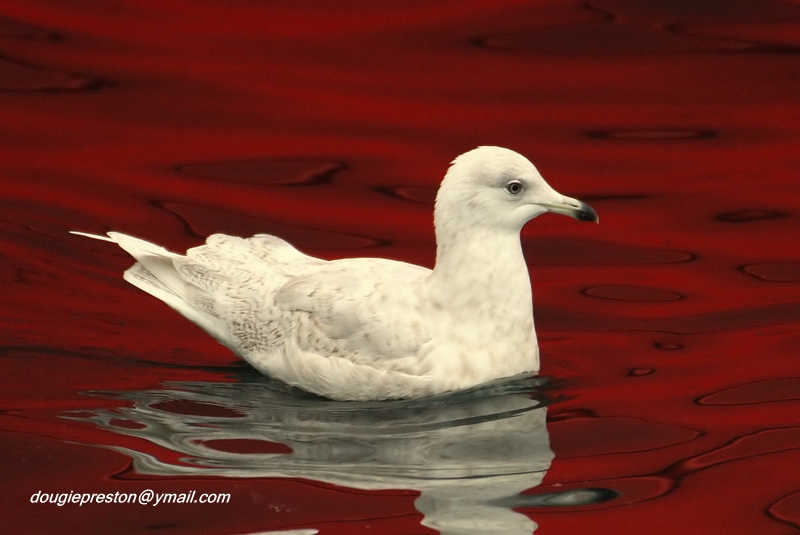
Iceland Gull, Lerwick, Mainland, Shetland (Photo: Dougie Preston)
Glaucous Gulls occurred in lesser numbers, with a minimum of 180 reported. This included fifteen at Killybegs on 15th, twelve around The Mullet (Mayo) on 12th and eleven at Bay of Skaill (Orkney) on 14th.

Glaucous Gull, Uyeasound, Unst, Shetland (Photo: Robbie Brookes)
It's been a decent winter for American Herring Gull records in Cork, with a new first-winter located in the harbour at Castletown Bearhaven on 14th. In addition to the Bonaparte's Gull at Ballygalley (Antrim), a possible was reported off St Justinian (Cornwall) on 13th. Twenty-five Ring-billed Gulls were split fairly equally between Britain and Ireland, where reports of threes came from Cuskinny Marsh and Bantry (Cork), both on 14th. In Britain, most records concerned familiar adults, although first-winters were at Drift Reservoir (Cornwall) on 12th and Barassie (Ayrshire) again on 15th–18th. New adults were at Rossall Point (Lancs) on 15th and Fort William (Highland) on 18th, with another again at Kinneil Lagoon (Forth) on 12th after an absence of four months. The Forster's Tern was also still off Kinvarra (Galway) on 12th and 16th.
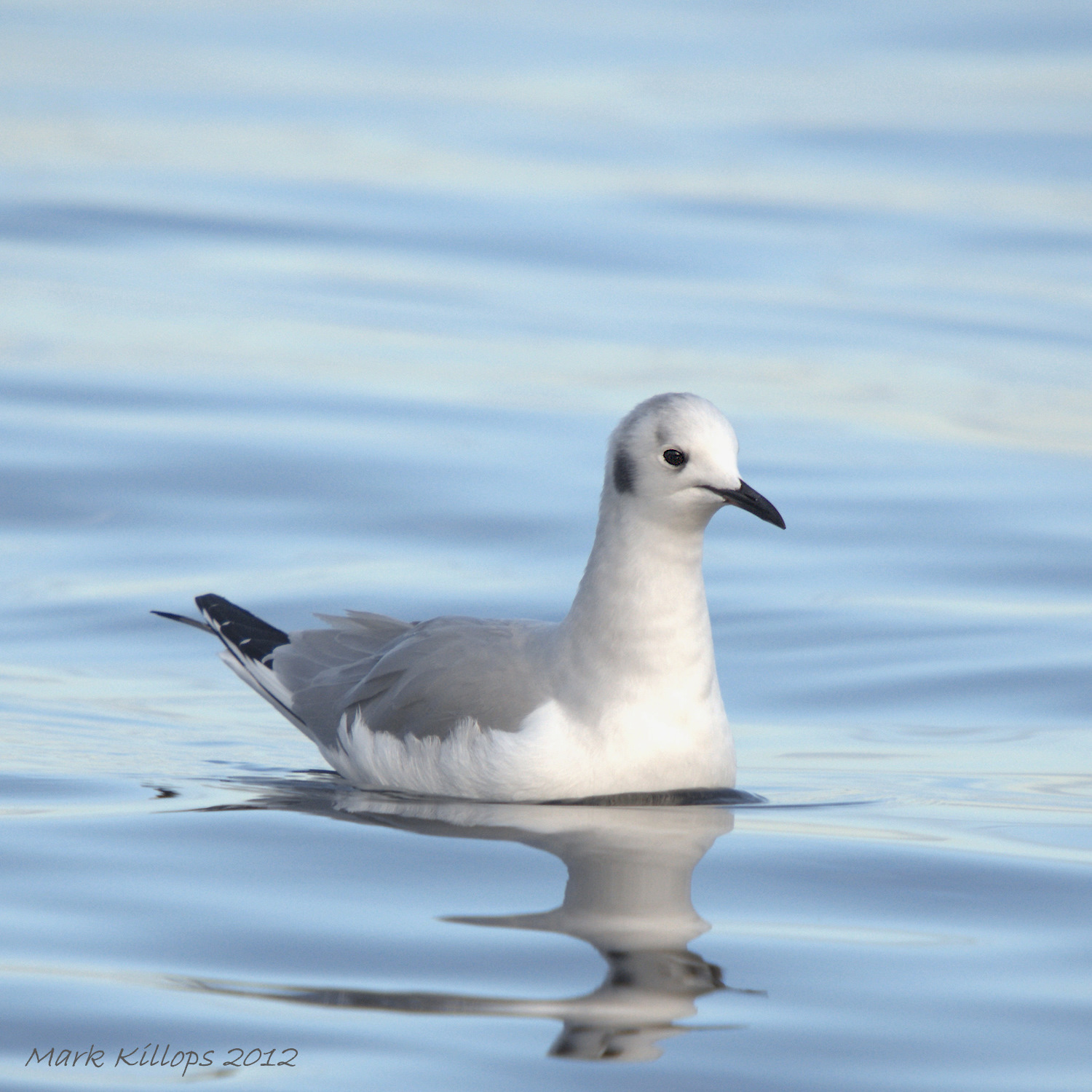
Bonaparte's Gull, Ballygalley, Antrim (Photo: Mark Killops)
Highlights on the passerine front very much mirrored those of last week. In Dorset, the Richard's Pipit remained faithful to fields at Wyke Regis to 17th, and the Desert Wheatear continued to please 2012 listers along the clifftop at Bempton (E Yorks) all week.
Also at Wyke Regis, the Hume's Leaf Warbler continued to show throughout the week, being seen best either early or late on in the day. A solid showing of nine Yellow-browed Warblers included two new birds at Gwennap sewage works (Cornwall) on 13th and another found at Exmouth (Devon) from 15th. Lingering birds were still on St Mary's (Scilly), at Par, Carnon Downs and Swanpool (all Cornwall), and at Ham Wall and Chew Valley Lake (Somerset). A Dusky Warbler also remained on St Mary's to 16th. More than ten Siberian Chiffchaffs showed a strong southwesterly bias, but also included birds still as far north and east as Bedfordshire and Suffolk.

Yellow-browed Warbler, Ham Wall RSPB, Somerset & Bristol (Photo: James Packer)
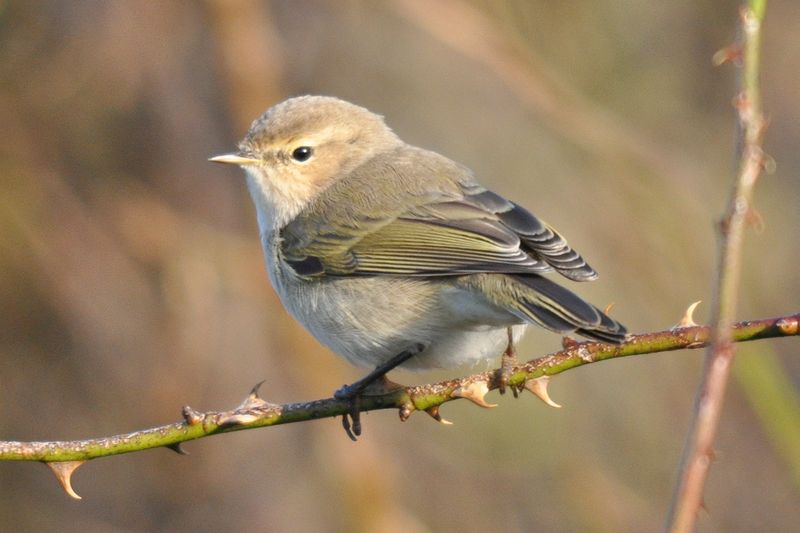
Siberian Chiffchaff, Bride, Isle of Man (Photo: Brian Liggins)
Around thirty Great Grey Shrikes were well scattered from Highland south to Hampshire. Two Scottish records came from Lyne of Gorthleck (Highland) on 12th, and another was still in the Forest of Ae (Dumf & Gall). Welsh birds were still at Llwyn-on Reservoir and Mynydd Margam (both Glamorgan), Wentwood Forest (Gwent) and Ty-Rhyg (Pembrokeshire).
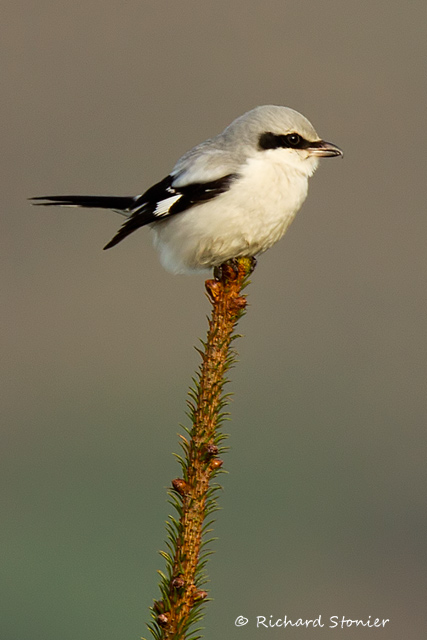
Great Grey Shrike, Ty-Rhyg, Pembrokeshire (Photo: Richard Stonier)
Following last week's reports, at least two ultra-cute Northern Long-tailed Tits were eventually tracked down at Luddenden Dean (W Yorks) on 16th–18th, although they proved extremely mobile. A couple of Penduline Tits at Portbury Wharf (Somerset) on 15th was an excellent record, although frustratingly they had disappeared by the following day.

Northern Long-tailed Tit, Luddenden Dean, West Yorkshire (Photo: Martin Garner)
Norfolk boasted an impressive yet isolated showing of Coues's Arctic Redpolls during the week. In addition to the usual first-winter still at Titchwell, two were (re-)found with around 70 redpolls in gardens at Kelling from 17th, where they occasionally showed well.
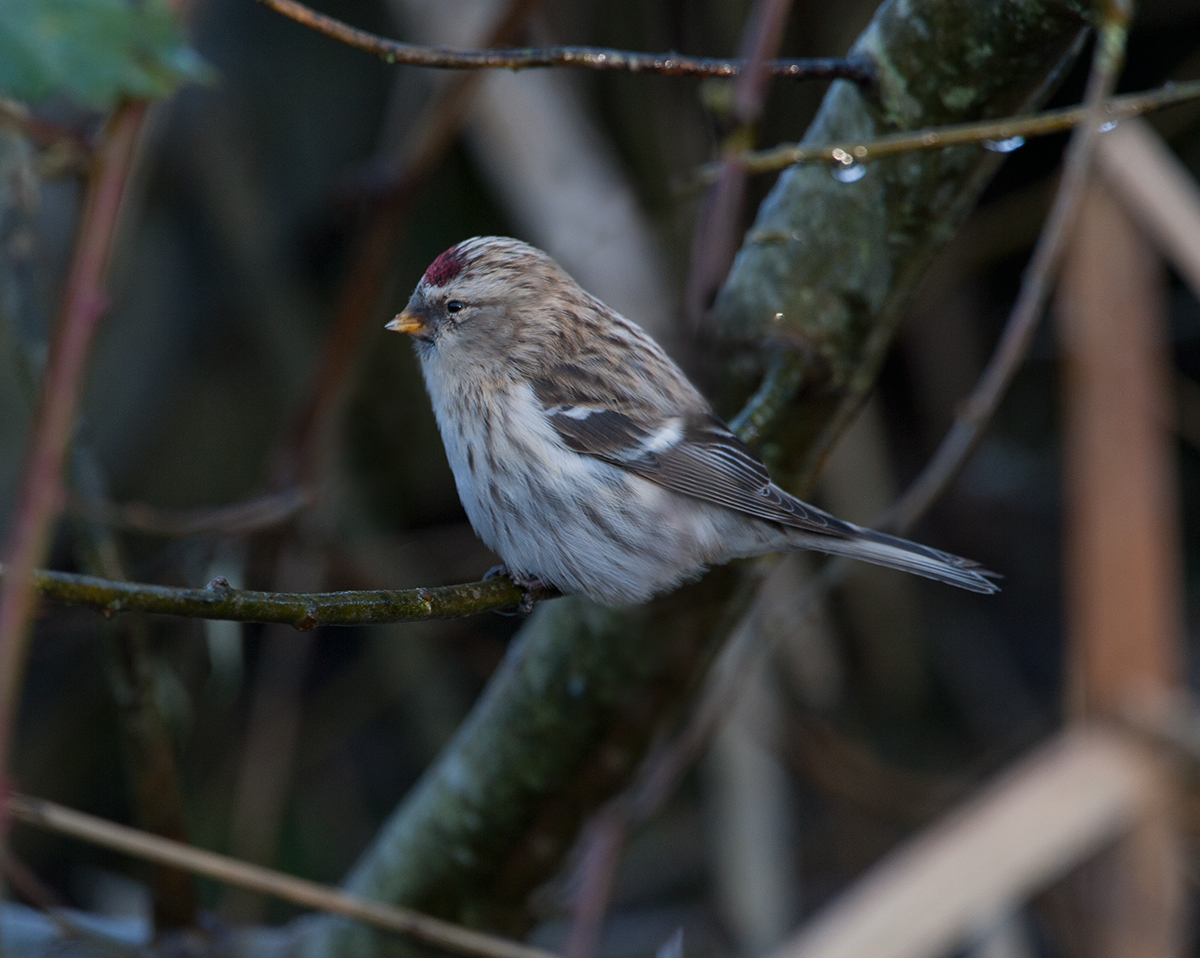
Coues' Arctic Redpoll, Titchwell RSPB, Norfolk (Photo: Kevin Du Rose)
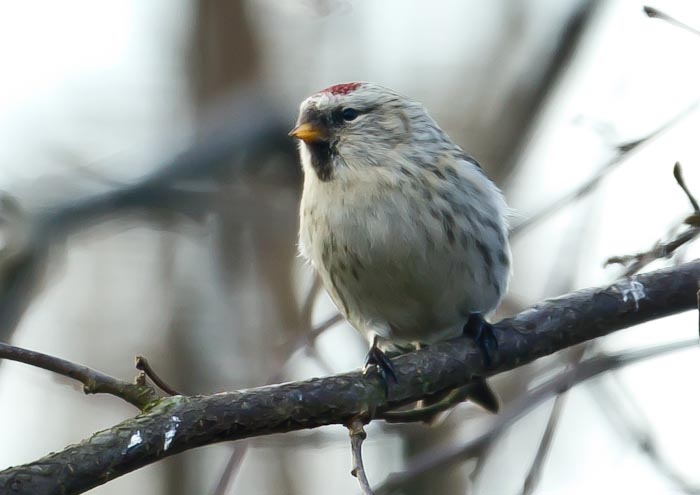
Coues' Arctic Redpoll, Kelling, Norfolk (Photo: John Miller)
Photo of the Week: 12th–18th January

Common Kingfisher, Crowle, Worcestershire (Photo: Mark Hancox)
Normally, we try to avoid repeatedly featuring images of the same species by the same photographer, especially where sensitive species are concerned. However, despite Mark Hancox already having a fair collection of Common Kingfisher Photos of the Week and Notable Images, his latest upload made such a splash that we've made an exception. Mark has a reputation for creativity and for pushing the boundaries in his image making. In this case, he has created an unusual image of the species as it takes the opportunity to grab a double-helping dinner. Despite low light levels requiring high ISO settings, Mark's capture and editing skills have ensured a crisp, bright and colourful composition that really stands out.
Other notable photos

Waxwing, Ipswich, Suffolk (Photo: Allan King)
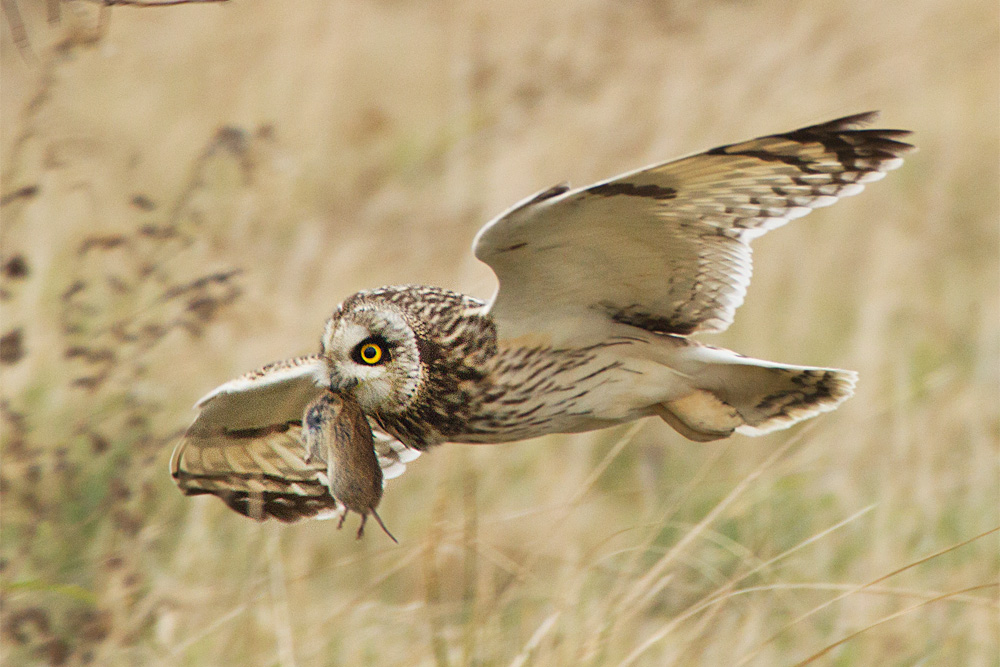
Short-eared Owl, undisclosed site, Northamptonshire (Photo: Jamie MacArthur)

Blue Tit, Rainford, Lancashire (Photo: Austin Thomas)

Hen Harrier, Burton Marsh, Cheshire (Photo: Steve Round)

American Avocet, United States (Photo: Alex Woodruff)

Pintail, Mistley, Essex (Photo: Chris Upson)
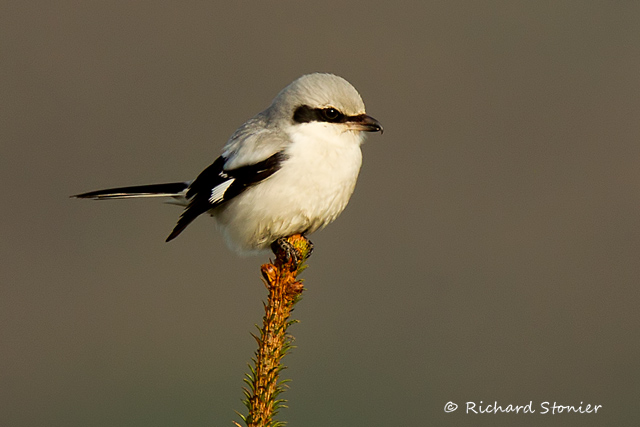
Great Grey Shrike, Ty-Rhyg, Pembrokeshire (Photo: Richard Stonier)

Common Crossbill, Forest of Dean, Gloucestershire (Photo: Lewis Thomson)

Sparrowhawk, undisclosed site, Dumfries & Galloway (Photo: Jim Duncan)

Osprey, United States (Photo: Charlie Fleming)

Grey Heron, Stanley Park, Blackpool, Lancashire (Photo: Jackie Moreton)

Bittern, Leighton Moss RSPB, Lancashire (Photo: Pauline Greenhalgh)
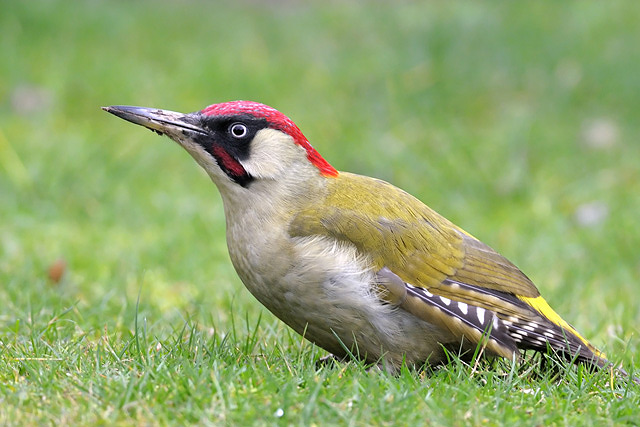
Green Woodpecker, undisclosed site, Greater London (Photo: Ian Curran)

Greenshank, Spain (Photo: Steve Fletcher)

Reeves's Pheasant, undisclosed site, Suffolk (Photo: Jon Evans)
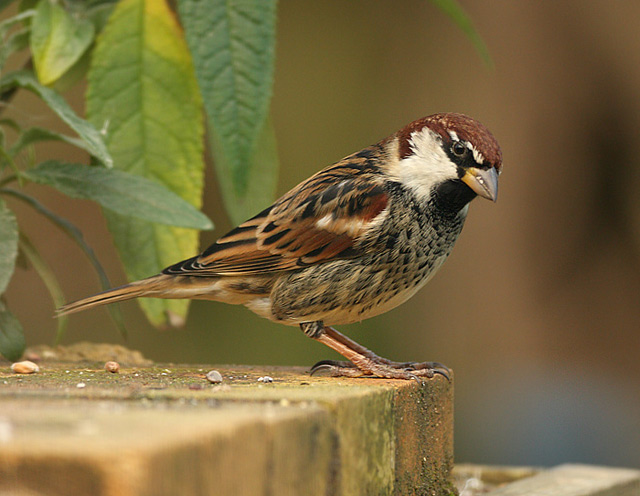
Spanish Sparrow, Calshot, Hampshire (Photo: James Packer)


